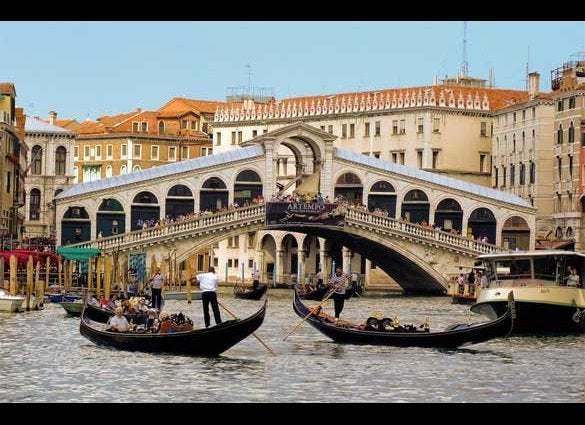While white-sand beaches with azure waters and billowing palms are nice, they're far from unusual. For those looking for a unique coastal experience, the following beaches provide just that. Barking sand, star-shaped fossils and natural underground hot springs are just a few of the experiences you'll find on some of the world's strangest beaches.
Gulpiyuri Beach, Spain
While there's nothing unusual about a beach with golden sand, crystal waters and waves, there is when its location is in the middle of a meadow. The 131-foot (40-meter) shoreline of Gulpiyuri Beach offers a whole new type of beach serenity, as you can cool off in the translucent salt waters while taking in both beach and rolling countryside hills.
Hoshizuna Beach, Japan
Hoshizuna Beach in Okinawa is one of the unique beaches in the world where you can find star-shaped sand (the other two, Kaijihama Beach and Aiyaruhama Beach, are on Taketomi Island, also in Okinawa ). The tiny stars are actually fossils from thousands of tiny crustaceans.
That said, locals have a mythical story to go along with the star-shaped sand. Legend has it that there once was a star mother and father who had a star baby. While they consulted the god of the sky about the birth, they left out the god of the ocean, who became infuriated and killed the baby star with a big snake. The snake's feces became the fossils we see today on the beach. Additionally, the god of sky put the baby star into the heavens as a fossil, which is why you see stars in the sky today.
Loango National Park, Africa
For those who want a mixture of pristine beach and wildlife spotting, Loango National Park is the place for you. The park extends all the way to the white-sanded coast, where you can watch hippos, gorillas, buffaloes, leopards, elephants and wild pigs take a dip in the water. It's definitely not your usual day of building sand castles and playing beach volleyball.
Petroglyph Beach, Alaska, U.S.
Petroglyph Beach State Historic Site will take you back in time. Nobody is quite sure how the 40-plus rock carvings got there, but they make the beach quite unusual as you take in the boulders etched with faces, birds and fish, thought to be carved over 8,000 years ago. For a mix of mystery, history and culture, Petroglyph Beach is a must.
Barking Sands Beach, Hawaii, U.S.
Just as its name suggests, the sand on this Kaua'i beach makes a barking noise when rubbed. This means as you walk over its 17 miles (27 kilometers) of coastline, it sounds like a rambunctious dog. What makes this beach even more unusual is it's also home to a rocket-launch site and missile-defense testing center.
Pink Sands Beach, Bahamas
While white- and golden-sand beaches are commonplace, when is the last time you laid out on a beach of striking pink sand? Counted amongst the best beaches in the Bahamas, Pink Sands Beach on Harbour Island is over three miles (five kilometers) long and 50 to 100 feet (80 to 161 kilometers) wide. The cause of its unusual hue is Foraminifera, a coral organism that leaves behind its pink shell when it dies.
Hot Water Beach, New Zealand
Due to intense geothermal activity on the Coromandel Peninsula, visitors to the Hot Water Beach can dig holes into the sand to create natural hot spring pools. The water gets as hot as 147°F (64°C), and makes for a relaxing and unique beach experience.
Schooner Gulch, California, U.S.
Also known as "Bowling Ball Beach," Schooner Gulch has thousands of boulders of equal shape, size and spacing lined up like soldiers defying the tides. What's truly amazing about this rare phenomenon is it's completely natural, with no human interference. The geological explanation is that these concretions are created from resilient minerals and materials that have been able to withstand damage from the Pacific Ocean.
Giant's Causeway, Ireland
Giant's Causeway, Ireland
A UNESCO World Heritage Site, Ireland's Giant's Causeway is home to 40,000 interlocking basalt columns, created by volcanic eruptions. These natural formations feature precise hexagonal shapes laid out like honeycomb clusters that disappear into the sea. The landscape is so dramatic in appearance it has inspired local legends of giants walking over the water to Scotland, hence the name.
Chandipur Beach, India
At high tide Chandipur Beach may appear like any other; however, at low tide the water recedes about three miles (five kilometers) from the shore, exposing the seabed to beach-goers. Visitors can see unusual seashells, driftwood, crabs and other organisms usually not exposed on the beach, giving them the feeling they're walking into the sea.
Genipabu Beach, Brazil
Genipabu Beach, Natal, Brazil
Genipabu offers much more than just swimming, as the landscape is a mix of beach and enormous sand dunes, which allow for sand boarding and camel riding. Meanwhile, the Atlantic Ocean provides opportunities for water sports.
Perissa Beach, Greece
Perissa Beach, Santorini, Greece
Perissa Beach's pitch-black sand creates a strikingly eerie yet beautiful landscape. The dark volcanic granules are extremely soft and fine as well. From the Santorini beach you can also walk to the ancient city of Thira, thought to have once been a Spartan colony, by hiking up the Perissa's backdrop mountain of Mesa Vouno. Warning: Because of the sand's dark color it tends to get extremely hot, so bring your flip flops.
Also on HuffPost:
